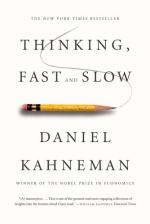|
This section contains 1,016 words (approx. 3 pages at 400 words per page) |

|
Summary
Tversky and Kahneman began a study on decision-making. Tversky had co-authored a textbook called, “Mathematical Psychology” and was an expert on the subject. They wanted to know how people chose between simple gambles and between gambles and sure things. Insight on this question would help in understanding more complex decision-making. Every decision is rife with uncertainty. They were focused on the intuitive choices. Five years into the research, they completed an essay titled, “Prospect Theory: An Analysis of Decision under Risk.” Their goal was to document and explain “systematic violations of the axioms of rationality in choices between gambles.” (280) They developed a theory referred to as prospect theory.
In 1738, Swiss scientist Daniel Bernoulli proposed a new approach to the evaluation of gambles. He observed that most people are averse to risk and will pick a sure thing over a gamble. Bernoulli created psychophysics...
(read more from the Chapters 25 - 29 Summary)
|
This section contains 1,016 words (approx. 3 pages at 400 words per page) |

|




